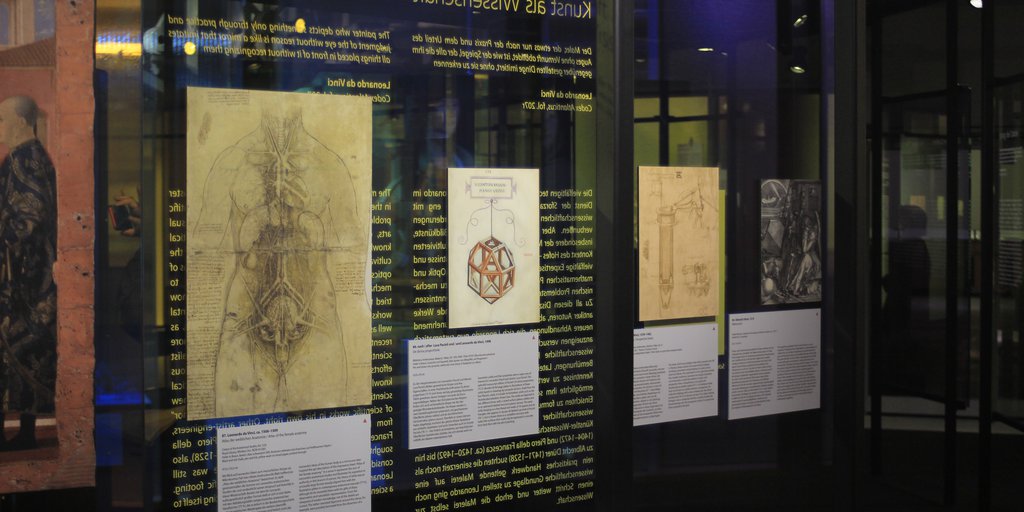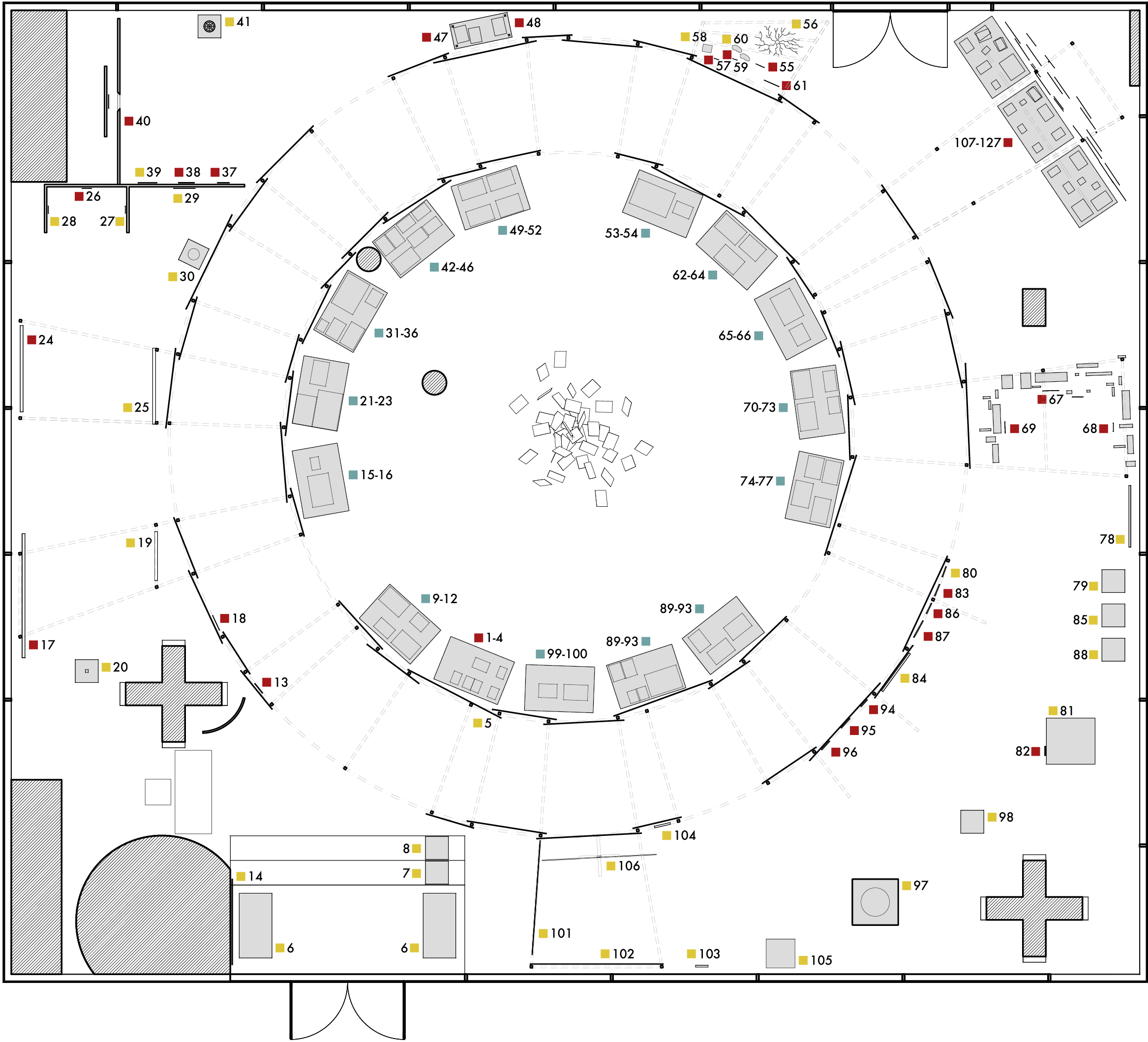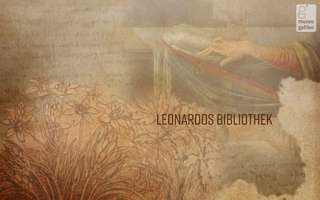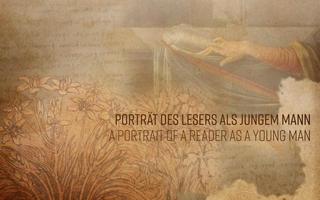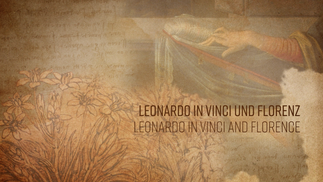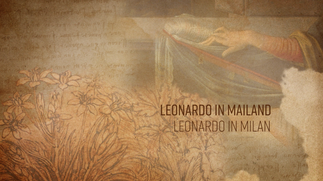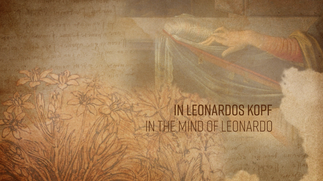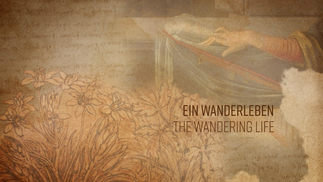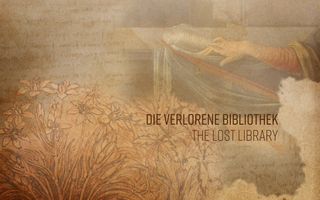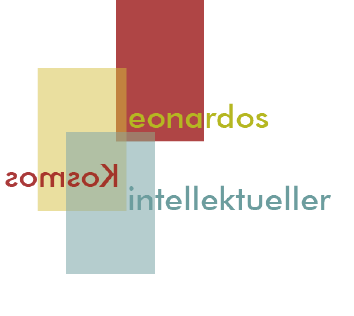
Science as Art, Art as Science <
The painter who depicts something only through practice and judgment of the eye without reason is like a mirror that imitates all things
placed in front of it without recognizing them
Leonardo da Vinci
Codex Atlanticus, fol. 207r. Translation: Elizabeth Hughes
The many and varied technical tasks Leonardo had to master in the service of the Sforzas were closely linked to scientific problems and challenges. But also the practice of the visual arts, especially painting, increasingly required theoretical knowledge and diverse expertise, particularly in the cultivated context of the court. This ranged from questions of optics and mathematical perspective construction to mechanical problems and medical knowledge. Leonardo now tried to learn systematically from the existing fundamental works by ancient authors related to all these disciplines, as well as from medieval sources and a growing number of more recent treatises. He expanded his library with specialist scientific literature and made concentrated and ambitious efforts to learn Latin and deepen his mathematical knowledge. This eventually enabled him to formulate new scientific insights of his own. He had now become an “author” of scientific works in his own right. Other artist-engineers, from Leon Battista Alberti (1404–1472) and Piero della Francesca (ca. 1420–1492) to Albrecht Dürer (1471–1528), also sought to place painting, which at the time was still considered a purely practical craft, on a scientific footing. Leonardo went one step further and elevated painting itself to a science.
Perspectives <
 | 84.
The Flagellation of Christ ca. 1459–1460 |
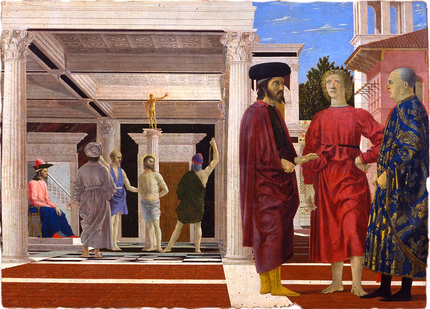
Glistening light and an ostentatious mastery of the construction of mathematical perspective characterize this painting by Piero della Francesca, a painter from Borgo San Sepolcro (ca. 1420–1492). How it came to be painted and who commissioned it remain a mystery. The alignments of the visual architectural elements and the coordinate system of the floor reveal the spatial depth used for the visual narrative—but create an irritating effect for the viewer: whereas the action that took place in Pontius Pilate’s praetorium is shifted to the far background (a prime example of contemporary palace architecture in the style of Alberti), the viewer’s attention is caught by a group of three men on a piazza in the foreground. They are demonstratively untouched by what is happening behind them and “deep in silent conversation.” Though mathematically correct, this was a shocking reversal of the scales traditionally used in portraying salvation history, which probably explains the many and often contradictory suggestions as to what it means. So far no one has been able to identify the figures convincingly.
References
Krass, Urte. 2015. “Strukturwandel der Öffentlichkeit. Piero della Francescas ‘Flagellazione’ als Schaustück für die Unerbittlichkeit der Perspektive.” In The Public in the Picture. Involving the Beholder in Antique, Islamic, Byzantine Western Medieval and Renaissance Art, edited by Beate Fricke and Urte Krass. Zurich / Berlin: Diaphanes, 249–266.
Lavin, Marilyn Aronberg. 1990. Piero della Francesca. The Flagellation. (1st ed. New York: Viking 1972). Chicago: University of Chicago Press.
Lucco, Mauro. 2005. “Piero della Francesca. La Flagellazione.” In Il Rinascimento a Urbino. Fra Carnevale e gli artisti del Palazzo di Federico. Exhibition catalogue Galleria Nazionale delle Marche, Urbino, 20.7.–14.11.2005, edited by Alessandro Marchi and Maria Rosaria Valazzi. Milan: Skira, 183–195, no. 48.
